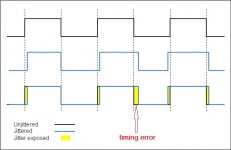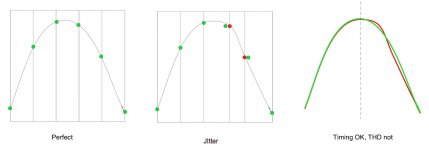So my statement about how "reference" is used in the audio business is a sign that I overestimated my competence? Is that how I shall interpret you post?
//
Mark4, I shall from here on never forget to quote you so that you cant run and hide...
//
being on mac I‘d need a converter which are available, but would this work (using a converter like V.TOP to USB RS - 232 DB9 serial-Adapter for Mac OS X: Amazon.de: Computer & Zubehor
)
?
I think that cable will work on the dam1021, some people used the Aten uc232a USB adapter with success, follow this guide
On the dam1921 you need a USB to TTL serial adapter which uses the FTDI FT232RL chip something like this
Last edited:
I didn't worry. Plugged in and the connection was there ... with this USB to RS232 adapter
DIGITUS USB auf Seriell Adapter - RS232 Konverter - USB: Amazon.de: Computer & Zubehor
this works perfect
Mark4, I shall from here on never forget to quote you so that you cant run and hide...
Merely trying to reduce embarrassment to you if others were to read the post and realize how apt it was. I left it up long enough so you could get the message, that should have been enough. Apparently not. How would you know what 'any sane person' would do? You prefer to declare those who disagree with you as 'insane?' That's not an insult to a whole lot of people?
Last edited:
I am convinced that in order for someone to appreciate Andrea´s efforts, he must have a good equipment with a lot of resolution, it would be free of synthetic artifacts, which are everywhere - in amplifiers, speakers, crossovers and especially crossovers components. When someone fine tunes it, he gets behind the edge of normal hifi, discover a completely new world, and there well made clock plays a huge role. In my opinion, it can be heard from the beginning, but with the improvement of your equipment, clocks are very important.
Last edited:
I find this a very interesting discussion. Phase noise, or jitter, is sort of a digital distortion. Is it that bad, when on the other hand using amplifiers with 2% "analog" THD? About THD there is the "perfect amplifiers" around, with like 0.00001% THD, but parallel to that a never ending discussion that distorion ain't that bad...Can digital distortion be used, or tuned  , to be of added value to the music quality?
, to be of added value to the music quality? 
Well, it wasn't me who mentioned the Total Dac as a reference.
That's ok
I find this a very interesting discussion. Phase noise, or jitter, is sort of a digital distortion. Is it that bad, when on the other hand using amplifiers with 2% "analog" THD? About THD there is the "perfect amplifiers" around, with like 0.00001% THD, but parallel to that a never ending discussion that distorion ain't that bad...Can digital distortion be used, or tuned, to be of added value to the music quality?

This sounds strange at first glance. However, on the analog level, for example, even-numbered distortion products are pleasant to the ear. Odd-numbered ones, on the other hand, are not. Digital phenomena, on the other hand, are usually very unpleasant. NOS enthusiasts therefore reject digital filters and enjoy analog distortion. One merit of the Soekris concept is to find a filter path that is perhaps optimal...
I find this a very interesting discussion. Phase noise, or jitter, is sort of a digital distortion. Is it that bad, when on the other hand using amplifiers with 2% "analog" THD? About THD there is the "perfect amplifiers" around, with like 0.00001% THD, but parallel to that a never ending discussion that distorion ain't that bad...Can digital distortion be used, or tuned, to be of added value to the music quality?

It's a timing distortion rather than a digital one.
From the digital point of view there is no distortion since data are and remain bit perfect.
The problem arises when the conversion from digital to analog signals takes place.
In a PCM DAC like the DAM1021 there is a precise moment when the switches change their state.
At that time digital data are converted in voltage or current (depending on the DAC) by combining the resistors of the ladder based on the digital word.
The conversion takes place with a precise time cadence to reconstruct the analog signal from digital data.
In case of PCM DAC like the DAM1021 the timing signal that dictates the cadence is the LRCK.
If you assume perfect switches and perfect resistors in the ladder no THD can occur.
But if the timing signal is not perfect a time distortion can occur (jitter in time domain, phase noise in frequency domain, anyway short term stability since long term stability does not matter in digital audio although someone continues measuring the Allan Deviation).
Can this affect the sound quality?
I know but I don't want to comment on this anymore.
Just try yourself by empirical experiments, of course not with the DAM1021 since you cannot replace the on board master clock with an external one.
But you can experience yourself using Ian's FIFO and replacing the oscillators in the same setup.
You can start from the provided cheap oscillators and then you can replace them with better ones (from Crystek to SOTA oscillators).
You could discover a new world.
Can this affect the sound quality?
It is a given that jitter can affect sound quality. The question is about the amount/type that is audible. It's also common knowledge that some types of converter are far more susceptible to jitter than others.
I see diminishing returns at the very least, if only due to the fact that the recordings you are listening to have been made with equipment far less sophisticated in terms of clock jitter.
It is a given that jitter can affect sound quality. The question is about the amount/type that is audible. It's also common knowledge that some types of converter are far more susceptible to jitter than others.
I see diminishing returns at the very least, if only due to the fact that the recordings you are listening to have been made with equipment far less sophisticated in terms of clock jitter.
Try yourself, it's not so difficult.
I have tried with Ian's FIFO so I know the results comparing the provided cheap chinese oscillator against the Crystek, against a good oscillator (-127 dBc at 10 Hz from the carrier). And soon I will try with a SOTA oscillator.
You may be pleasantly surprised or you may be disappointed because you don't feel any difference.
Just try.
Maybe there is a reason why low phase noise oscillators are still being developed for audio.
MSB Tech for example, just because their DAC was pointed out on this thread as the absolute reference.
I see diminishing returns at the very least, if only due to the fact that the recordings you are listening to have been made with equipment far less sophisticated in terms of clock jitter.
Jitter (or phase noise) does not imply "timing errors" in music reproduction.
Two very valid points.
Jitter (or phase noise) does not imply "timing errors" in music reproduction.
//
Not exactly.
When you have jitter (or phase noise) each clock edge will not take place exactly at the expected time, that is will be affected by a timing error.
The audio samples will be played with an incorrect cadence that means exactly "timing errors" since we are talking about time.
When you have jitter (or phase noise) each clock edge will not take place exactly at the expected time, that is will be affected by a timing error.
The audio samples will be played with an incorrect cadence that means exactly "timing errors" since we are talking about time.
While this explanation of yours seems plausible, do you have anything to back that up? 'cadence' does not sound very.. scientific
While this explanation of yours seems plausible, do you have anything to back that up? 'cadence' does not sound very.. scientific
I also wrote "each clock edge will not take place exactly at the expected time, that is will be affected by a timing error" that sounds very scientific.
Anyway you can find tons of paper on the web about jitter in digital audio where you can read all the supporting explanations you want.
And even about the mathematical relation between jitter and phase noise.
Attachments
Not *exactly*... I'm sorry, but this is false. If you just think a little about the time scales between jitter and a struck drum or a plucked string - or even an imagined small tiny bell creating one little "pling" of one half of a 22kHz sinus, you will realise this. I sorry if this shatters your world but it is, a fact. How you can confuse a clock edge with an aural, i.e. a by listening possible to detect "timing" error - this makes me think you don't understand how PCM really works.
Re-creating the positive envelope of say a 5 kHz tone occupies 4,4 sampels - all these samples has to be moved in time so that a timing error can be perceived. Digest that. Ponder it. Be an engineer!
I help you some more.... the absolut shortest sound event that the earbrain can detect is maybe a micro second. I'll give this some security margin, call you, and raise you a 1000 times -> 1ns. So, 1 nano second. Now, for the timing faults (there are none... but I will imagine one for the discussion...) you seem to think of is in the region of pico second - which is 1000 shorter than whats detectable (with a safety margin of yet an other 1000) which you will call a very poor clock.
What really happens is that 5 kHz the envelope gets cooked because on samle comes in late or early... hence, distorsion - if you gaze at that envelope in the "10 nano second per div setting", you will see that it is "in time".
//
Re-creating the positive envelope of say a 5 kHz tone occupies 4,4 sampels - all these samples has to be moved in time so that a timing error can be perceived. Digest that. Ponder it. Be an engineer!
I help you some more.... the absolut shortest sound event that the earbrain can detect is maybe a micro second. I'll give this some security margin, call you, and raise you a 1000 times -> 1ns. So, 1 nano second. Now, for the timing faults (there are none... but I will imagine one for the discussion...) you seem to think of is in the region of pico second - which is 1000 shorter than whats detectable (with a safety margin of yet an other 1000) which you will call a very poor clock.
What really happens is that 5 kHz the envelope gets cooked because on samle comes in late or early... hence, distorsion - if you gaze at that envelope in the "10 nano second per div setting", you will see that it is "in time".
//
Attachments
- Home
- Vendor's Bazaar
- Reference DAC Module - Discrete R-2R Sign Magnitude 24 bit 384 KHz

